Scaffolds play a vital role in the building and construction industry; by providing support and stability to access and working platforms, the temporary structures ensure employees can perform their work safely. One of the key components of scaffolds is scaffolding planks. These pieces of material—also sometimes referred to as scaffold boards or walkboards—provide the surface on which employees and equipment can stand. They are available in numerous variations, differing in material and design, to suit different scaffolding applications.
At Kennison Forest Products, Inc., we specialize in wooden scaffolding planks. Below, we highlight this type and how it compares to the other types of scaffolding planks.
Types of Scaffolding Planks
As indicated above, scaffolding planks are available in various materials and designs.Wooden Scaffolding Types
Scaffolding Planks by Material
Wooden Planks
The lumber used for scaffolding planks is a different grade than the lumber used for construction projects. The material must have more than six rings per inch, few surface and structural defects, and, in the case of Southern pine, a grain slope of one inch to the side for every 14 inches in length. Additionally, it must be inspected, graded, and marked by a certified independent third-party organization.
Two of the most commonly used types of wood scaffolding planks are:
Solid-sawn planks. Solid-sawn scaffolding planks are commonly made from Southern Pine, but they can also be constructed from Douglas Fir or other similar tree species.
Laminate veneer lumber (LVL) planks. LVL scaffolding planks are made from thin layers of wood that are bonded together with an exterior-grade adhesive.
Metal Planks
The two most common types of metal scaffolding planks are:
Steel planks. Steel scaffolding planks exhibit excellent strength and durability.
Aluminum planks. Aluminum scaffolding planks are lightweight and low cost.
Scaffolding Planks by Design
Single Scaffold Planks
Single scaffold planks are generally used in brick masonry applications. They are designed to be placed parallel to the wall surface but 1.2 meters away.
Double Scaffold Planks
Double scaffold planks are typically used for stone masonry applications. They are designed to be positioned in two rows for additional strength and stability.
Comparisons Between Plank Types
Each of the above plank types offers different advantages and disadvantages that make it suitable for different applications. For example:
Solid-sawn scaffold planks are a cost-effective option that offers a good combination of strength and dimensional stability. Compared to LVL planks, they are better suited for moisture-laden environments.
LVL scaffold planks offer better strength and support at a slightly higher cost than solid-sawn planks.
Steel scaffold planks provide the greatest strength, making them ideal for high load bearing applications. However, they increase the overall weight of the scaffolding structure.
Aluminum scaffold planks reduce the weight of a scaffolding structure but are less strong and durable than steel planks. They are suitable for less demanding applications than steel planks.
Contact Kennison Forest Products for High-Quality Scaffolding Planks
Investing in quality scaffolding planks is vital to ensuring the safety of employees and equipment on scaffolding structures. For scaffolding planks you can trust in your most critical applications, turn to the experts at Kennison Forest Products.
Whether you need solid sawn or LVL boards, we’ve got you covered! Our wooden scaffolding planks are made in the USA from high-quality lumber. They offer superior strength, stability, durability, and reliability at a competitive price, so you can have peace of mind in your building and construction applications without worrying about meeting budgetary restrictions.
To learn more about our products and how they can benefit your building and construction project, contact us today. To discuss your requirements with one of our team members, request a quote.

